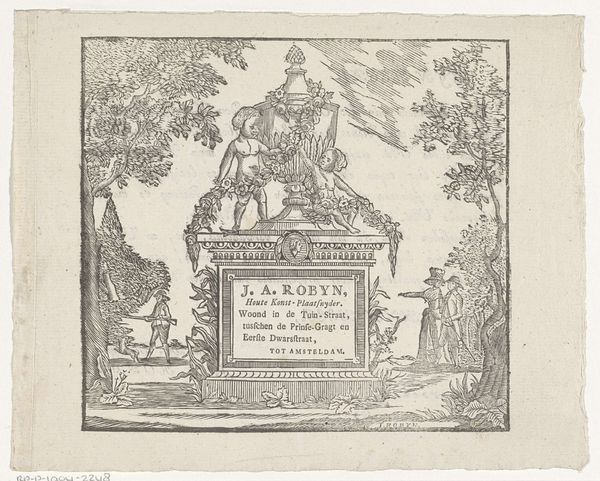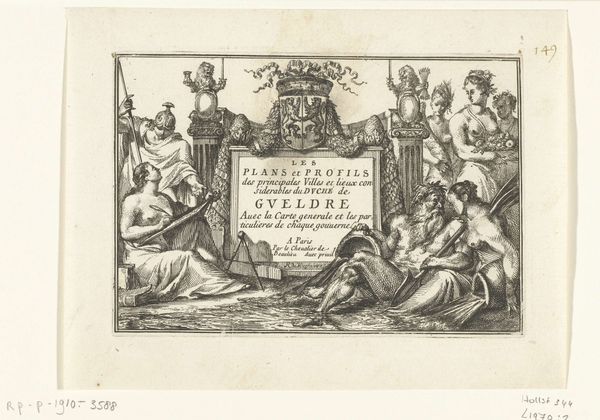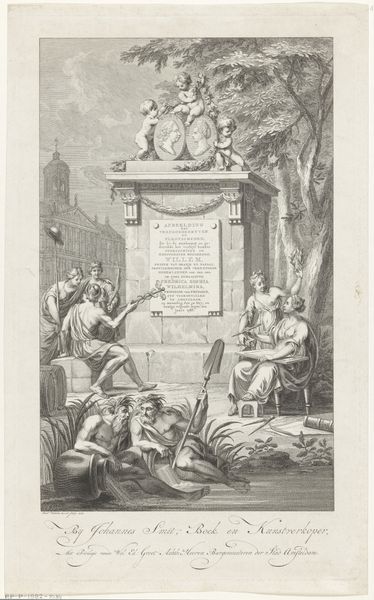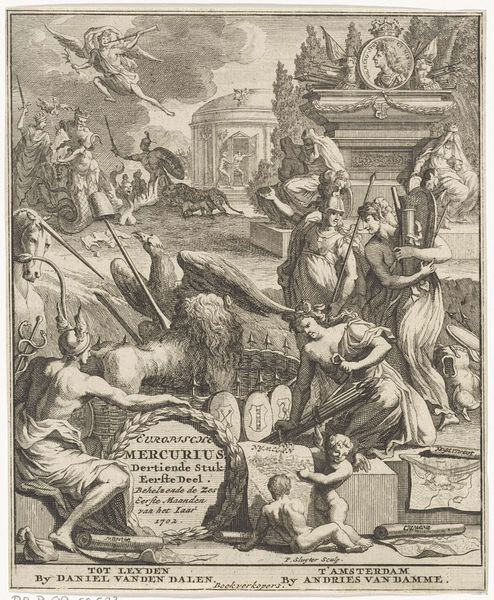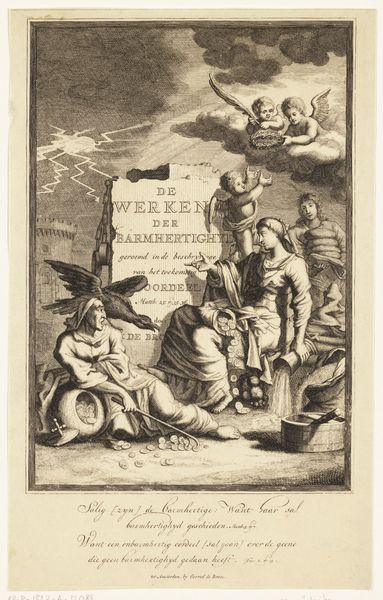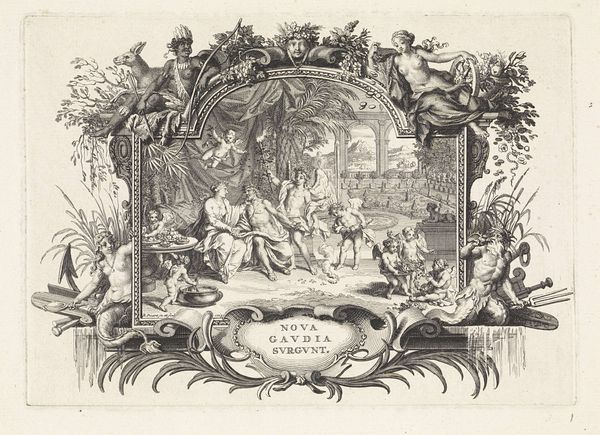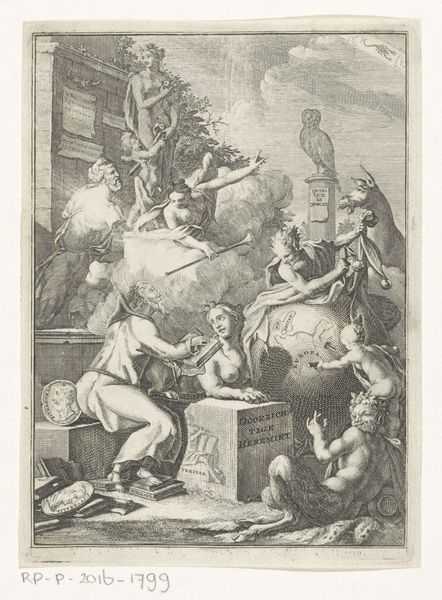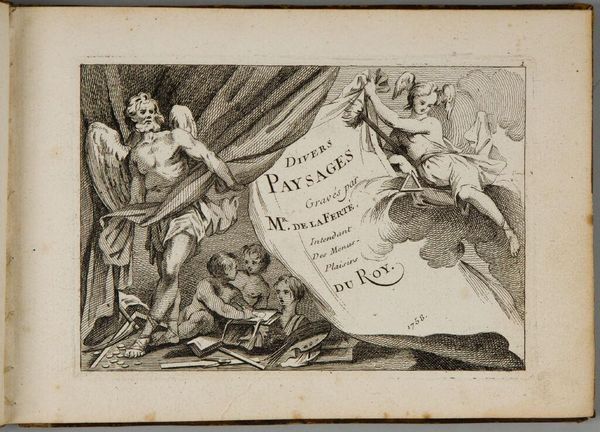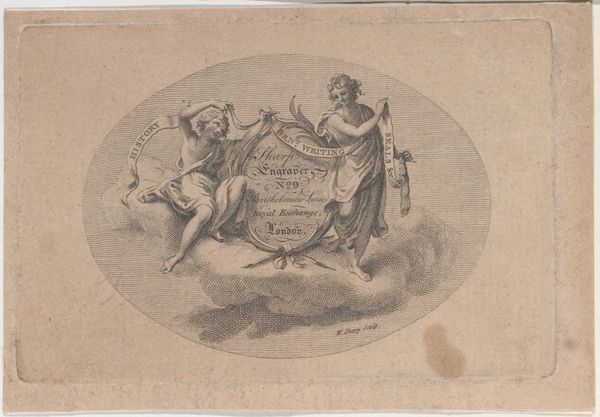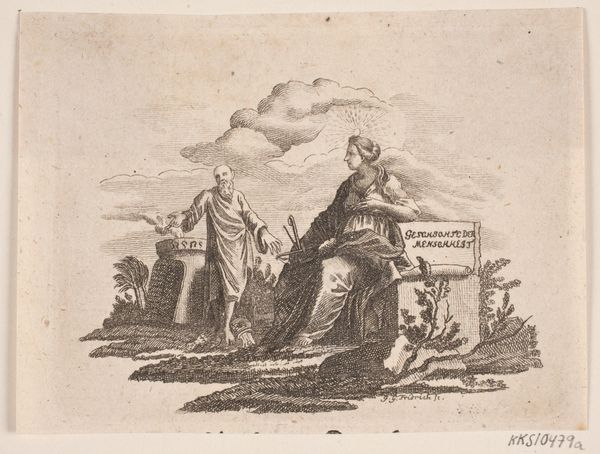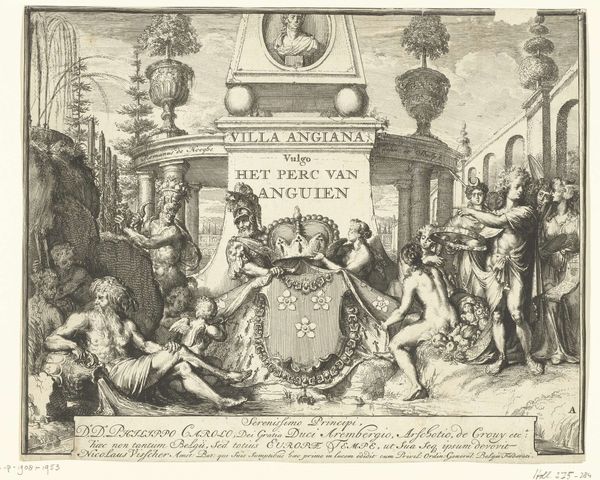
drawing, print, engraving
#
drawing
#
baroque
# print
#
landscape
#
history-painting
#
engraving
Dimensions: height 129 mm, width 168 mm
Copyright: Rijks Museum: Open Domain
Curator: Here we have "Man wijst tekenende jongeman op een ruïne", or "Man pointing out a ruin to a young man drawing," a print made around 1707 by Jan Goeree. It's currently held in the Rijksmuseum collection. Editor: This piece has a striking allegorical feel. The architectural structure seems solid, but then these whimsical scenes on either side draw you in, like glimpses into a symbolic landscape. Curator: Precisely. Goeree was a master of Baroque engraving. Observe the precision of line and form—the delicate hatching that defines the figures, the textures of stone, the balance and the interplay of light and shadow. It creates a remarkably convincing three-dimensionality. Editor: The composition seems to operate on several symbolic registers. I'm drawn to the paternal figure guiding the young artist. There’s an unmistakable visual echo of tradition being passed down—an allegorical representation of knowledge. Notice the title panel and various emblems surrounding the figures; they act as mnemonic devices for the content within. Curator: Absolutely. The scene is intentionally constructed, each element carefully considered. The architectural framework provides a structural order while the landscape introduces a picturesque element characteristic of the Baroque sensibility. The viewer’s eye dances among planes, moving from the characters’ posture and composition of the work to a royal symbolic structure atop. Editor: I am struck by the British symbolism surrounding the main inscription. The Scottish Unicorn paired with English emblems really drives home the combined kingdom’s artistic splendor to potential readers. Considering the book's era and title, 'The Delights of Great Britain and Ireland,' it’s possible this image aims to subtly evoke themes of exploration and a reawakening of classical ideals. Curator: Indeed. This print, beyond its literal representation, engages with intellectual currents prevalent during its creation. It offers a visual manifesto. The emphasis on structured compositions, and on tradition, highlights an ordered artistic style rooted in the baroque aesthetic. Editor: This offers a glimpse into the past, not merely visually, but culturally as well. A conversation, perhaps, frozen in ink, between generations, nations, and artistic philosophies. It asks us to look, learn, and appreciate the weight of symbolic landscapes. Curator: Yes, seeing how the piece organizes contrasting aspects allows viewers to better understand its internal framework. Editor: A masterful blend of history and artistic expression.
Comments
No comments
Be the first to comment and join the conversation on the ultimate creative platform.
